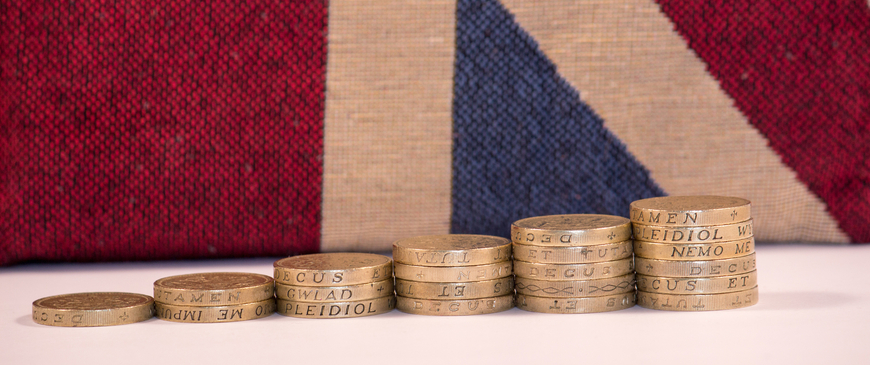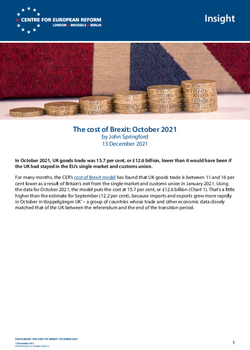
The cost of Brexit: October 2021
In October 2021, UK goods trade was 15.7 per cent, or £12.6 billion, lower than it would have been if the UK had stayed in the EU’s single market and customs union.
For many months, the CER’s cost of Brexit model has found that UK goods trade is between 11 and 16 per cent lower as a result of Britain’s exit from the single market and customs union in January 2021. Using the data for October 2021, the model puts the cost at 15.7 per cent, or £12.6 billion (Chart 1). That’s a little higher than the estimate for September (12.2 per cent), because imports and exports grew more rapidly in October in ‘doppelgänger UK’ – a group of countries whose trade and other economic data closely matched that of the UK between the referendum and the end of the transition period.

The doppelgänger is a subset of countries selected from a larger group of 22 advanced economies by an algorithm. The algorithm finds the countries that, when combined, create a doppelgänger UK that has the smallest possible deviation from the real UK data until December 2019, before the pandemic struck. (The data includes goods trade, GDP growth, population, inflation, industrial production as a share of output, as well as some other measures. More information on the model, including Stata code and input data, is available here.)
ITV News covered the latest estimate in a report on Friday 10th December, which is available to watch here.
John Springford is deputy director of the Centre for European Reform.


Add new comment